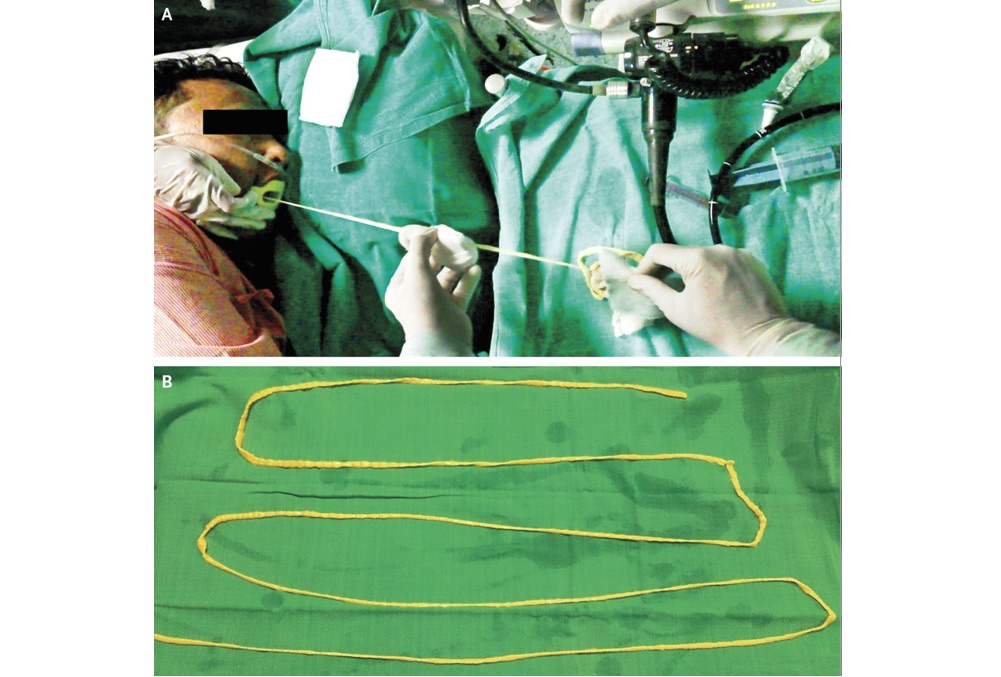Doctors Remove 6-Foot-Long Tapeworm from Man's Gut

Doctors in India removed a lengthy pork tapeworm from a man's gut, according to a recent report of the man's case.
The tapeworm, which goes by the scientific name Taenia solium, was nearly 2 meters (6.6 feet) long. In fact, it was the longest worm that Dr. Cyriac Philips, a liver specialist at PVS Memorial Hospital in India who treated the man, had ever seen, he said.
The 48-year-old man told the doctors that he had been having abdominal pain for two months before he sought medical attention, according to the brief report of the man's case, published today (Jan. 25) in The New England Journal of Medicine.
The doctors performed a colonoscopy, and found a segment of an undulating worm in the man's colon, Philips told Live Science. [The 10 Most Diabolical and Disgusting Parasites]
In patients with tapeworms, doctors typically find segments of the parasite in the gut, Philips said. But in this case, the piece of the parasite in the man's colon was only a part of the story.
Next, the doctors performed an endoscopy, meaning that they inserted a camera into the man's stomach and the upper part of his small intestine, to explore the upper part of the man's digestive system, according to the report.
They were surprised to find a whole worm curled up in the upper part of the man's small intestine, Philips said.
Sign up for the Live Science daily newsletter now
Get the world’s most fascinating discoveries delivered straight to your inbox.
The doctors were able to remove the worm by pulling it up through the man's mouth, according to the report. The intact tapeworm spanned 1.88 m (6.2 feet), the doctors wrote.
Tapeworms can grow to be longer than 11.5 feet (3.5 m) and live for years in a person's gut, according to the National Library of Medicine (NLM). Because tapeworms usually do not cause symptoms, people may not realize they have an infection, the NLM says. In some cases, however, a tapeworm can cause abdominal pain, according to the NLM.
The whole procedure, which included the endoscopy and the parasite removal, took about an hour and 15 minutes, Philips said. The man was sedated during the procedure, Philips said.
After the tapeworm was removed, the man was given anti-parasitic medications to kill any remains of the tapeworm, according to the report. A month after the tapeworm's removal, the man reported having no additional symptoms, the doctors wrote.
In October, doctors in New York reported seeing an increase in a different type of infection from this same tapeworm, which occurs when a person ingests eggs from the pork tapeworm. These eggs can form cysts throughout the body, including the brain. The lead author of that report, Dr. Amy Spallone, a resident in internal medicine at Stony Brook University Hospital in New York, told Live Science at the time that the prevalence of this particular type of infection in the rest of the U.S. is not well understood.
Originally published on Live Science.

Flu: Facts about seasonal influenza and bird flu
What is hantavirus? The rare but deadly respiratory illness spread by rodents










